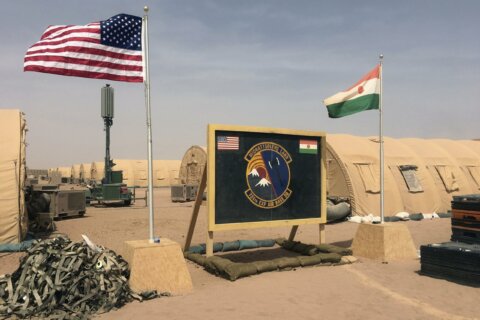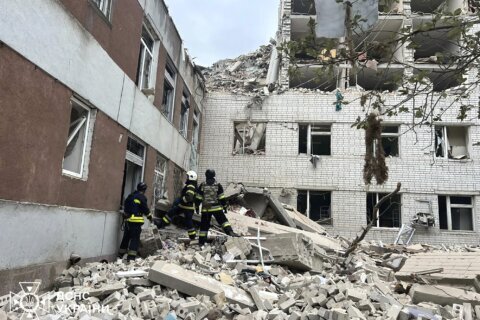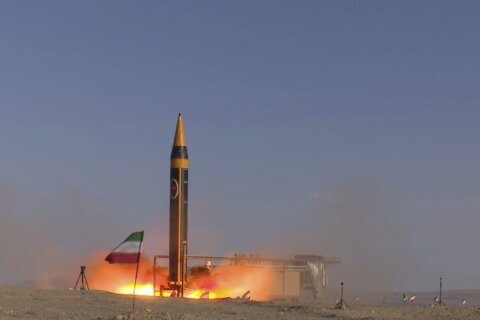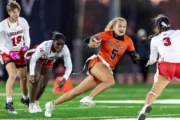WASHINGTON — For months, officials from intelligence services from around the world have quietly met and discussed growing concerns that a new strain of terrorist would be nearly impossible to stop from launching attacks.
They feared that terrorist hybrids — lone wolves and small cells of violent extremists who swear allegiance to organizations such as al-Qaida while operating on their own — would begin popping up. The explosion of social-media propaganda from terror organizations is attracting an increasing number of people to join them.
European Union Counter-Terrorism Coordinator Gilles de Kerchove told WTOP, “The trend is still that in countries like France, there are about three people per day going to Syria to join the Islamic State of Iraq and the Levant (ISIL).”
Authorities are worried that the terror conscripts might return to the west to launch attacks, but the unpredictability of their behavior is also a great concern.
Paris appeared to have been the scene of the first major outbreak. Residents had been feeling uneasy for months.
“We had been waiting for an attack and were surprised that we made it through the holidays,” said Ellen Wasylina, an American and longtime resident of France.
Three lone-wolf attacks before Christmas left one person dead, and “our guard was brought down a little bit,” Wasylina said.
The French government managed to shut down five terror plots in the 18 months leading up to the Charlie Hebdo attacks, including several shortly before the end of 2014.
But the glimmer of hope quickly turned to despair on Jan. 7.
Unsuspecting Parisians saw “two men out on the street with Kalashnikovs in plain daylight,” said Wasylina. “This was at 11:30 in the morning.”
At about 11:25 a.m., brothers Cherif, 32, and Said Kouachi, 34, entered the Charlie Hebdo headquarters building. Within a span of approximately seven minutes, they methodically shot and killed 11 people, including eight journalists, a police bodyguard, a maintenance worker and a visitor with automatic rifles, calling out the names of some victims as they fired at them.
After exiting the building and claiming “we have avenged the prophet,” they killed another policeman –a fellow Muslim.
The speed of the rampage stunned Paris. But the calm the assassins employed in their killing spree and their civility toward some who crossed their paths during the attack left victims, onlookers on rooftops and intelligence and security authorities unclear about why the attack happened.
Within an hour of the rampage, the brothers granted their carjacking victim the time to retrieve his dog from the vehicle before they took off. They had also spared the life of a woman when they entered the magazine’s offices.
The behavior complicated attempts by security officials to determine what happened immediately after the attack.
In the early hours afterward, a senior U.S. Intelligence official told WTOP, “While it’s true Charlie Hebdo has been subject of violent extremist threats over the past several years, none of the threats has been recent, nor can they be linked to this attack.”
That statement came before authorities learned that Said Kouachi, the older brother, had traveled to Yemen to train with al-Qaida in the Arabian Peninsula (AQAP) and met the group’s inspirational leader Anwar al-Awlaki before he was killed in a drone attack.
According to Kouachi, he discussed the attack during that visit and later media reports from France indicate he trained in Yemen with AQAP.
There are reports that while in Yemen, Kouachi lived with Umar Farouk Abdulmutallab, who tried to bring down Northwest Airlines Flight 253 over Detroit on Christmas Day 2009 wearing a bomb in his underwear.
There appears to be little doubt the he was exposed to AQAP’s hatred of western and free-speech symbols, yet he waited more than three years to launch the attack
Retired State Department counterterrorism analyst Dennis Pluchinsky uncovered more contradictions in the terrorists’ behavior. He said they were not out to kill everyone they came across. “This was a discriminate attack. The terrorists went after a specific target — the people involved in the magazine. They shot the police because they were in the way.”
Pluchinsky pointed out, “Had they been out to carry out an indiscriminate attack they would have killed the woman who let them into the building and people on the street. Heck, they could have shot out from the car window and killed a lot of people as they escaped.”
Stratfor Vice President of Intelligence Fred Burton said in an interview after the attack, “It’s a tough nut to crack, due to the sheer volume of potential suspects. It takes very good tactical analysts to connect the dots and a working threat matrix to figure out whom to conduct surveillance on, any given day.”
The number of terror suspects “combined with the Achilles heel of counterterrorism agents around the world — the lack of human intelligence and penetration of the cells” means detecting this new hybrid terrorist will remain difficult at best,” Burton said.
Follow @WTOP on Twitter and WTOP on Facebook.








